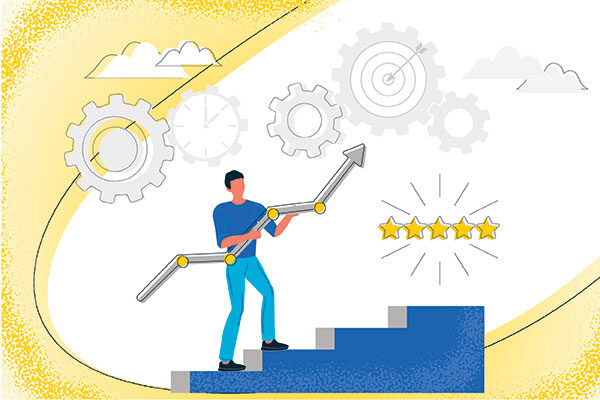Maximize Achievement and Persistence by Aligning Rewards to Recognize Milestones

(illustration: Adobe Stock)
We know that rewards can encourage people to pursue a goal over time. But when is the best time to give them?

New Cornell research suggests that individuals are more likely to persist if they receive their first reward only after they’ve completed a chunk of a task and afterwards earn a stream of small incentives, says Kaitlin Woolley, associate professor of marketing and management communication at the Samuel Curtis Johnson Graduate School of Management in Cornell’s SC Johnson College of Business. When they receive that first bonus, “you want people to have a sense of accomplishment and feel, ‘I’ve reached this point where I’m starting to get rewarded and I want to keep earning more,’” says Woolley, who as a motivation scholar has long studied the influence of incentives on behavior.
Unlike an immediate reward, which gives recipients something for practically nothing, a delayed first payoff provides time for individuals to expend effort and thus feel good about hitting the first milestone. That first prize needs to be satisfying but not “so good that they think they’ve got it and they’re done,” says Woolley. Dangling a string of subsequent payouts conveys that people can earn still more if they persist.
The findings may interest not only companies wanting to retain customers through loyalty programs but also managers seeking to motivate employees and even parents looking to steer their children’s behavior. Woolley and co-author Marissa A. Sharif, assistant professor at the University of Pennsylvania’s Wharton School, recently published “Work-to-Unlock Rewards: Leveraging Goals in Reward Systems to Increase Consumer Persistence” in the Journal of Consumer Research.
Delaying the first incentive is key
Woolley and Sharif gave participants in two research groups the goal of flossing their teeth daily for 12 days. They placed one group in what they call a “work-to-receive” rewards structure, telling them they’d be paid 24 cents each day they flossed starting on the first day. The second group, put into what the researchers call a “work-to-unlock” structure, was told to floss daily and receive 32 cents per floss starting on the fourth day. Results showed that the second group flossed 15 percent more than those who were paid on the first day.
In related experiments, the researchers found that those who faced a delay in receiving rewards were more persistent than those who received them right away, even when the total amount the first group could earn was smaller. Woolley and Sharif observed higher levels of perseverance also when they awarded smiley-face badges instead of money. Even that non-monetary but regular positive reinforcement was enough to keep people engaged, Woolley noted.
The researchers also found that a larger lump-sum reward isn’t as motivating as a string of small ones. In another test, participants in one group received 20 cents after defining 20 words but then received nothing until they’d defined another 20 words, a milestone that would earn them a second lump sum of another 20 cents. Those in a second group also received 20 cents after defining 20 words but afterwards earned two cents for every word they defined. Those in the first group were more likely to quit after the first payment, perhaps because they disliked the prospect of receiving nothing else until after they’d achieved the next goal.
Woolley notes that companies that want to delay rewards in, for instance, a customer loyalty program should make the task required to receive the first payoff an achievable one. So that first chunk might require completing, say, 25 percent of the total task and no more than about 50 percent of it. Making people work for too long with no payout is a turnoff, Woolley says. “People care more about how long they have to work than about the size of the reward.”
